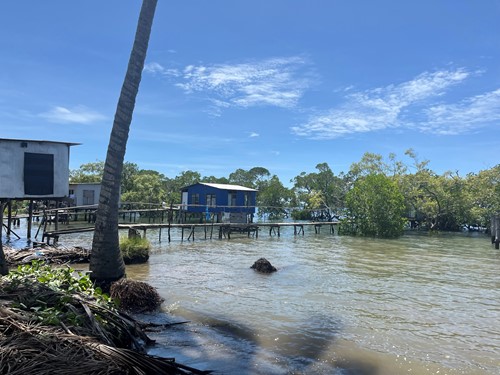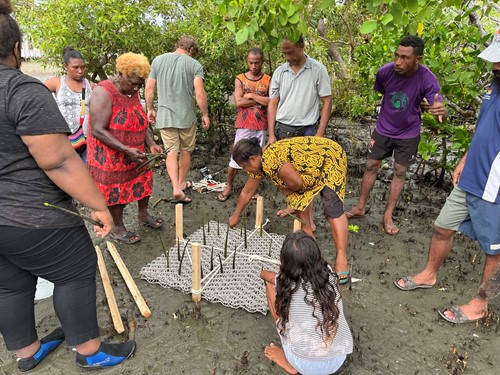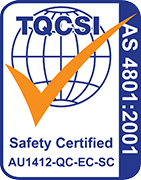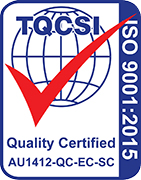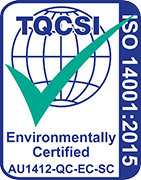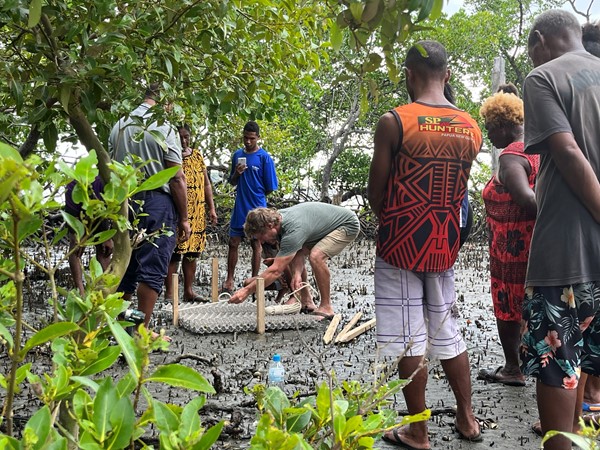
Waste not, want not
29 March, 2023
Nature and nurture are taking on new meaning in Papua New Guinea, where potato waste is helping to rehabilitate locally valuable mangrove systems.
In a trial project with the nation’s Conservation and Environment Protection Agency (CEPA) and the Kyeema Foundation, the Water & Carbon Group (WCG) is helping to restore mangroves around Gwarumemase village on Bootless Bay.
The work has wider implications for an island nation at heavy risk of climate-change pressures.
According to WCG environment and ecological restoration manager Dan Cole, Gwarumemase - east of Port Moresby - has long been vulnerable to sea-level rise and saltwater intrusion.
But after being forced to relocate its food production inland, more recent attention had turned to widening its adjoining mangrove system to create an improved buffer.
This was initially done in partnership with CEPA, with a focus on more traditional mangrove (tubestock-style) planting, before WCG approached CEPA to trial a different approach – mosaic planting integrating BESE-elements with local mangrove seeds.
Made from waste products, including starch left over from potato-chip production, BESE-elements are a stackable 3D matrix, in which single sheet elements click together to create a porous membrane structure for ecosystem restoration.
The biodegradable products will eventually break down once the mangroves are strong enough to flourish independently.
The results so far are promising enough that “we would be confident to try and scale up in the future”.
“Climate and sea-level rise are a genuine concern for PNG,” explained Dan, whose qualifications include postgraduate studies in sustainable indigenous partnerships.
“Historically, mangroves have been cleared near settlements in PNG, and used as fuel wood or timber for construction. But there is also sea-level rise, and the loss of mangroves is exacerbating the situation.
“The organisation we are working with has done a lot of community education and mangrove plantings, so the use of BESE-elements made sense, to see if we could use a seed-based system instead of a mangrove tubestock-style planting.”
“It’s a seed-based system, which is quite different to the one traditionally used, where you would collect seeds and grow tube stock,” said Dan.
“There is a bit of a timeframe with that, but if the seed is available the BESE-elements system can enable projects to be scaled up to a greater extent.”
This allows for immediate planting, as opposed to the longer window that could be needed to grow plant material in a tubestock-style planting.
Work on the trial project was assisted by the Gwarumemase community, with several youth now engaged in maintaining and monitoring the trial modules.
Dan said WCG owed a lot to the relationships its partners had already established with the villagers, which was crucial in a country where the majority of land was family owned, meaning it could normally take time to secure access.
“We met the elders on the first day, and on the second we were able to do the trial,” he said. “That’s almost unheard of. So we’re very grateful for their support.”
He noted it was part of a broader PNG climate change adaptation project and was also a chance for Waardenburg Ecology, which developed the BESE-elements, to test how the material behaved in tropical waters.
From here, Dan is keen to secure further grant funding to partner with organisations and develop bigger project opportunities to help other communities at a larger scale.
“It is very meaningful work,” he said.
“Some of the islands, atolls and coastal communities of PNG are very predisposed to climate change, and to be able to do this trial and work towards scaling it up is very satisfying.”
Daniel said the BESE-elements had applications across the Pacific, and also parts of Australia.
“Climate-change issues in the Northern Territory, for example, range from cyclones and storm surges to saltwater intrusion,” he said.
“However, the impact is more profound on the smaller island scale. So the journey we are on is trying to get it out to these other Pacific regions.”
For more information about how BESE-elements can help your ecological project visit our Products page and contact us.
